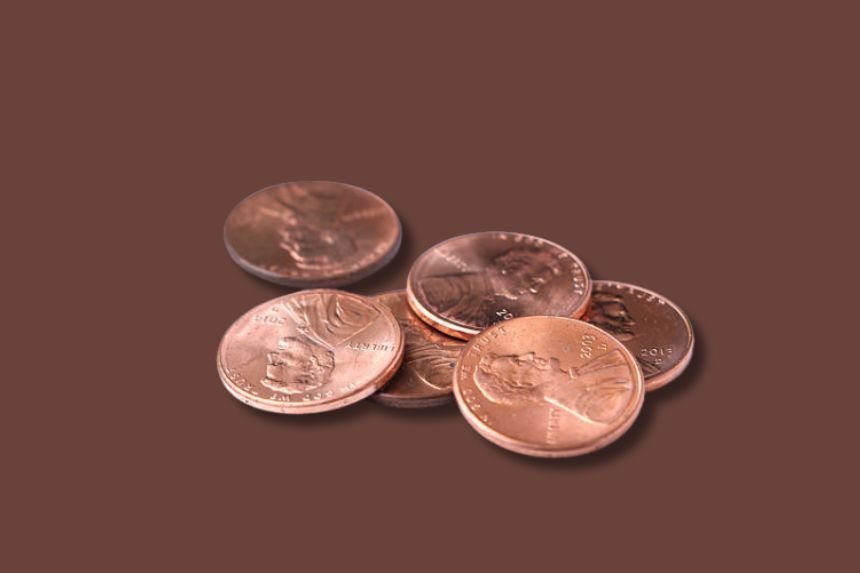For over two centuries, the penny has been an essential part of American life. From its first minting in 1793 in Philadelphia to its presence in modern commerce, the penny has served as both currency and cultural symbol. Once valuable for buying small items like penny candy, biscuits, or even a candle, the penny has faced challenges due to rising production costs and diminishing purchasing power.
- The Early History of the Penny
- Penny Composition and Changes Over Time
- The Rising Cost of the Penny
- Penny in Modern Commerce
- Cultural and Historical Significance of the Penny
- The Penny’s Decline and Government Action
- Collector Pennies and Continued Importance
- The Economic Impact of the Penny’s End
- The Penny as a Historical Symbol
- The Future Without the Penny
- Conclusion: Honoring the Penny
- FAQs
Today, nearly 300 billion pennies still circulate in the United States, often forgotten in coin jars, “Take a Penny/Leave a Penny” trays, or tip jars. While its practical use is declining, the penny continues to carry historical and cultural significance, symbolizing an era when even a small coin could shape everyday life.
The Early History of the Penny
Alexander Hamilton and the Coinage Act
The story of the American penny begins with the Coinage Act of 1792, passed by Congress to establish a national mint and standardize coinage for the new republic. Alexander Hamilton, the first Secretary of the Treasury, played a crucial role in authorizing the production of pennies in Philadelphia, marking the start of the nation’s official coinage system.
Early Designs and Lady Liberty
Initially made entirely of copper, the penny featured Lady Liberty on its obverse side. The coin underwent several design changes over the decades, reflecting the political, cultural, and artistic priorities of the nation.
Lincoln Becomes the Face of the Penny
In 1909, Abraham Lincoln became the first president to appear on a U.S. coin, a historic choice that continues to this day. The penny became a symbol of leadership and American heritage, with its obverse design remaining consistent while the reverse evolved over the years.
US to Raise Copper Tariffs to 50%, Trump Announces
Penny Composition and Changes Over Time
Copper to Steel: Wartime Adjustments
During World War II, copper was in high demand for military purposes, prompting the U.S. Mint to produce pennies from zinc-coated steel in 1943. This temporary change reflected the coin’s adaptability in response to national needs.
Modern Penny: Zinc and Copper Plating
Since 1982, pennies have consisted of 97.5% zinc and 2.5% copper plating. While the metal composition changed, the familiar copper appearance was preserved, maintaining continuity for collectors and the public alike.
Cultural Influence Beyond Currency
The penny has influenced culture beyond coinage. Penny loafers, a fashion staple, were named after the coin and remain popular decades later, illustrating the broader cultural reach of this small piece of currency.
The Rising Cost of the Penny
Production Costs Today
The primary reason for the penny’s decline is its high production cost. The 2024 U.S. Mint Annual Report notes that each penny costs roughly 3.7 cents to produce, over 270% more than its face value.
Comparison with Other Coins
Nickels cost about 13.8 cents to produce, while dimes and quarters remain far more economical, costing less than half their face value. This comparison highlights the inefficiency of producing low-denomination coins in modern times.
Historical Trend of Increasing Costs
Since 2000, the production cost of pennies has more than quadrupled, illustrating a long-term trend of financial inefficiency. Ending penny production is expected to save the Treasury around $56 million per year, though billions of pennies will remain in circulation as legal tender.
Penny in Modern Commerce
Retailer Adaptations
Despite its declining utility, the penny continues to affect daily transactions. Retailers like McDonald’s, Wendy’s, Kwik Trip, and Giant Eagle have had to adjust to shortages by rounding cash transactions to the nearest nickel or encouraging customers to provide exact change.
Digital Transactions and Cashless Payments
Digital payments, including debit and credit card transactions, remain unaffected by the absence of pennies. These systems maintain pricing accuracy and offer convenience as cash transactions become less dependent on low-denomination coins.
Promotions and Continued Cultural Use
Some retailers have creatively maintained the penny’s presence, offering prizes or promotions in exchange for coins. These strategies underscore the ongoing cultural significance of the penny, even as its practical role diminishes. Visit our homepage for more information.
Cultural and Historical Significance of the Penny
Symbol of Luck and Frugality
Historically, the penny has symbolized thrift, saving, and luck. Popular beliefs suggest that picking up a penny brings good fortune, a notion perpetuated in media and everyday folklore.
Media References
The penny has appeared in films such as Penny Serenade and songs like Penny Lover, reflecting its integration into American culture and entertainment.
Collectors and Family Memories
Collectors prize the penny for its historical designs and unique variations, from the Lincoln Memorial to wartime steel pennies. Families often preserve pennies in jars or pass them down through generations, keeping memories and traditions alive.
The Penny’s Decline and Government Action
Trump Administration and Official End
Production of the penny officially ceased in 2024 following a decision by President Donald Trump, who cited inefficiency and high costs as the primary reasons. The last pennies were minted in Philadelphia, marking the end of a 232-year-old legacy.
Legal and Retail Challenges
The transition has created challenges for cash transactions. In states like Delaware, Connecticut, Michigan, and Oregon, merchants must provide exact change. Additionally, federal programs like SNAP, which depend on precise payment amounts, require careful management of rounding policies.
Industry Response and Legislation
Organizations such as the National Association of Convenience Stores (NACS) have advocated for legislation to guide retailers through the transition. Clear policies are needed to prevent confusion and legal challenges during the penny’s phase-out.
Collector Pennies and Continued Importance
Limited Minting for Collectors
Although regular production has ended, the U.S. Mint continues to produce special collector pennies. These coins preserve historical designs and commemorate the legacy of the 232-year-old coin.
Historical Documentation
From Benjamin Franklin’s Fugio cent to the modern Lincoln penny, these coins chronicle American history. Collector pennies serve as tangible reminders of economic, political, and social evolution.
Cultural Legacy Preserved
Collectors, museums, and numismatic societies ensure that the penny remains a cultural artifact, highlighting its enduring symbolic significance.
The Economic Impact of the Penny’s End
Rounding Practices
Without the penny, cash transactions increasingly rely on rounding to the nearest nickel. While minor for individual transactions, these adjustments have measurable effects across millions of households.
Consumer Costs
Studies estimate that rounding differences may cost households about five cents annually, a modest yet notable effect on daily commerce.
Future of Other Coins
The nickel, costing nearly 14 cents to produce, may also face scrutiny in the future. Discussions about low-denomination coins will continue as the economy adapts to a cashless and efficient currency system.
The Penny as a Historical Symbol
Reflecting Society Through Design
The penny documents American politics, art, and ideals through its evolving designs. Each coin captures the culture and priorities of its era, from Lady Liberty to Lincoln and commemorative shields.
Memories in Everyday Life
Coins stored in jars, flattened on tracks, or collected by families preserve memories and traditions. The penny represents a tangible link between past and present, bridging generations.
Educational Value
Pennies serve as practical teaching tools, allowing students, collectors, and the general public to learn about American history, currency, and cultural development.
The Future Without the Penny
Transition to Nickel Rounding
Cash transactions will increasingly round to the nearest nickel, while digital payments continue to dominate.
Impact on Businesses
Retailers must adapt pricing and accounting practices, ensuring compliance with state and federal regulations.
Collectors Preserve the Past
Even as circulation ends, collector pennies will maintain the penny’s legacy, highlighting its historical and cultural importance.
Conclusion: Honoring the Penny
The American penny represents history, culture, and tradition. From its first minting in 1793 to its final production in Philadelphia, the penny has served as a monetary unit, cultural symbol, and collectible artifact. While it may no longer buy candy or pay for parking meters, its legacy lives on in collectors’ hands, museums, and the broader narrative of American life.
Even as cash registers stop jingling with pennies, this small coin continues to reflect over two centuries of history, showing that even the tiniest denomination can have a profound cultural and economic impact.
FAQs
- What year is a penny worth $20,000?
Rare pennies with minting errors, like the 1943 copper penny or 1955 doubled-die penny, can sell for $20,000 or more, depending on condition and rarity. - Why are 1999 pennies worth $4,500?
Some 1999 pennies, especially those with rare minting errors like a double die, are highly collectible and can be valued at thousands of dollars. - Is a penny 1 cent?
Yes, a penny is worth one cent ($0.01), making it the smallest denomination of U.S. currency. - Why is a 1982 penny worth $10,000?
Certain 1982 pennies with rare errors or unusual metal compositions, like double dies or copper/zinc variations, can fetch up to $10,000 among collectors.








